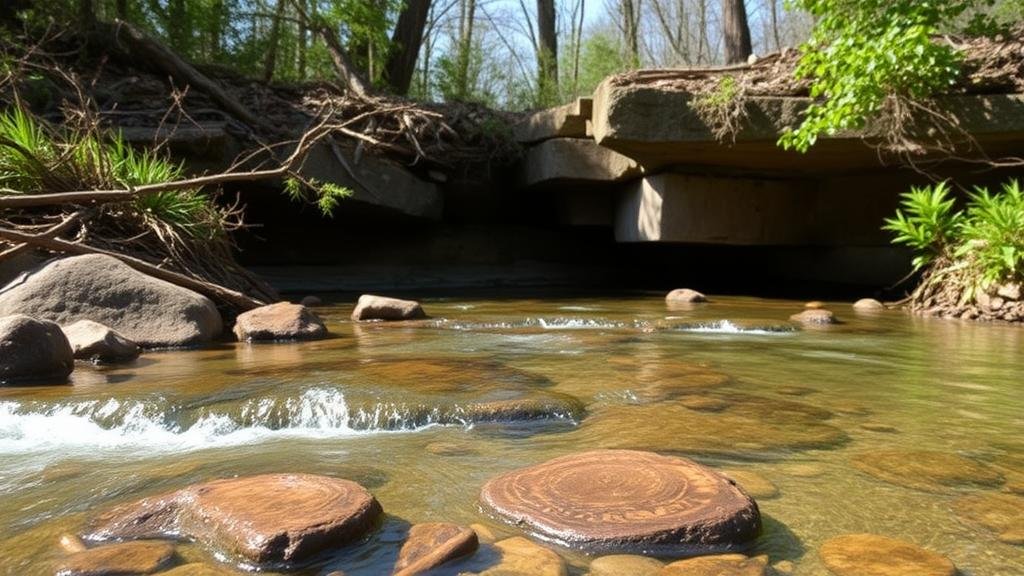How to Analyze River Flow Patterns to Locate Submerged Artifacts
How to Analyze River Flow Patterns to Locate Submerged Artifacts
Locating submerged artifacts in rivers is a critical endeavor for archaeologists, historians, and environmental scientists. Understanding river flow patterns is essential for predicting where artifacts may settle and remain hidden beneath the waters surface. This article provides an in-depth analysis of how to study river flow patterns effectively to locate these artifacts.
Understanding River Dynamics
Rivers are dynamic systems influenced by various factors, including topography, hydrology, and sediment transport. Analyzing these dynamics begins with understanding how water flows and interacts with its environment. Key aspects include:
- Flow Velocity: The speed at which water moves influences sediment transport and potential artifact deposition.
- Hydraulic Geometry: This refers to the relationships between flow depth, width, and velocity–critical for modeling river behavior.
- Seasonal Variability: River flow can significantly change with the seasons due to rainfall, snowmelt, and drought, affecting where and how artifacts are located.
For example, a study conducted on the Thames River in London found that artifacts were more likely to be deposited during high-flow conditions caused by heavy rains, highlighting the importance of flow velocity in artifact localization.
Mapping Submerged Environments
Advanced mapping techniques can enhance the analysis of river flow patterns. Geographic Information Systems (GIS), along with remote sensing technologies, can be employed to visualize river morphology and sediment deposition areas. e tools provide valuable insights such as:
- Bathymetric Surveys: Utilizing sonar technology to create detailed maps of underwater topography.
- Hydrodynamic Modeling: Simulating water flow to predict which areas are likely to accumulate sediments and artifacts.
In the Hudson River, researchers employed GIS to analyze historical flow patterns, successfully predicting locations where shipwrecks and other artifacts might be found based on sediment accumulation zones.
Analyzing Sediment Transport
Understanding sediment transport processes is crucial for predicting where artifacts may end up. Key concepts include:
- Suspended Load vs. Bed Load: Artifacts can be included in either the suspended load (transported in the water column) or bed load (moved along the riverbed).
- Critical Shear Stress: The threshold at which sediment begins to move, which is crucial in understanding how and where artifacts may dislodge from their original positions.
For example, a comprehensive study on the Mississippi River has shown that significant archaeological findings were often associated with low shear stress areas where sediment deposition was prevalent, illustrating the need for targeted sediment transport analysis.
Field Survey Techniques
Once flow patterns and sediment transport are understood, archaeologists can deploy field survey techniques to locate submerged artifacts accurately. Common methodologies include:
- Magnetometry: Utilizing magnetic sensors to detect ferrous materials often associated with historical artifacts.
- Ground-Penetrating Radar (GPR): This technology can help locate submerged structures and larger artifacts beneath sediment layers.
In Lake Ontario, a combination of magnetometry and GPR was instrumental in revealing a series of shipwrecks that had been previously undetected due to sediment coverage, demonstrating the effectiveness of these field techniques when coupled with river flow analysis.
Practical Applications and Case Studies
The analysis of river flow patterns has been successfully applied in various case studies, offering critical insights for locating submerged artifacts:
- The Amazon River: Archaeologists utilized flow pattern analysis combined with sediment dating to locate ancient settlements submerged over thousands of years.
- Chicago River: By analyzing how modified flow patterns affected sediment deposition, researchers recovered artifacts from early Chicago’s infrastructure.
Such case studies emphasize the importance of comprehensive river flow analysis in archaeological practices and how interdisciplinary approaches can lead to significant discoveries.
Actionable Takeaways
For practitioners and researchers interested in locating submerged artifacts, consider the following actionable steps:
- Conduct thorough hydrodynamic modeling and mapping of river systems before commencing fieldwork.
- Employ modern technologies like GIS, magnetometry, and GPR to enhance artifact detection capabilities.
- Integrate seasonal data and historical flow patterns to refine search strategies effectively.
By understanding and applying river flow pattern analysis, archaeologists can significantly improve their chances of locating submerged artifacts, thereby enriching our knowledge of history and culture.


